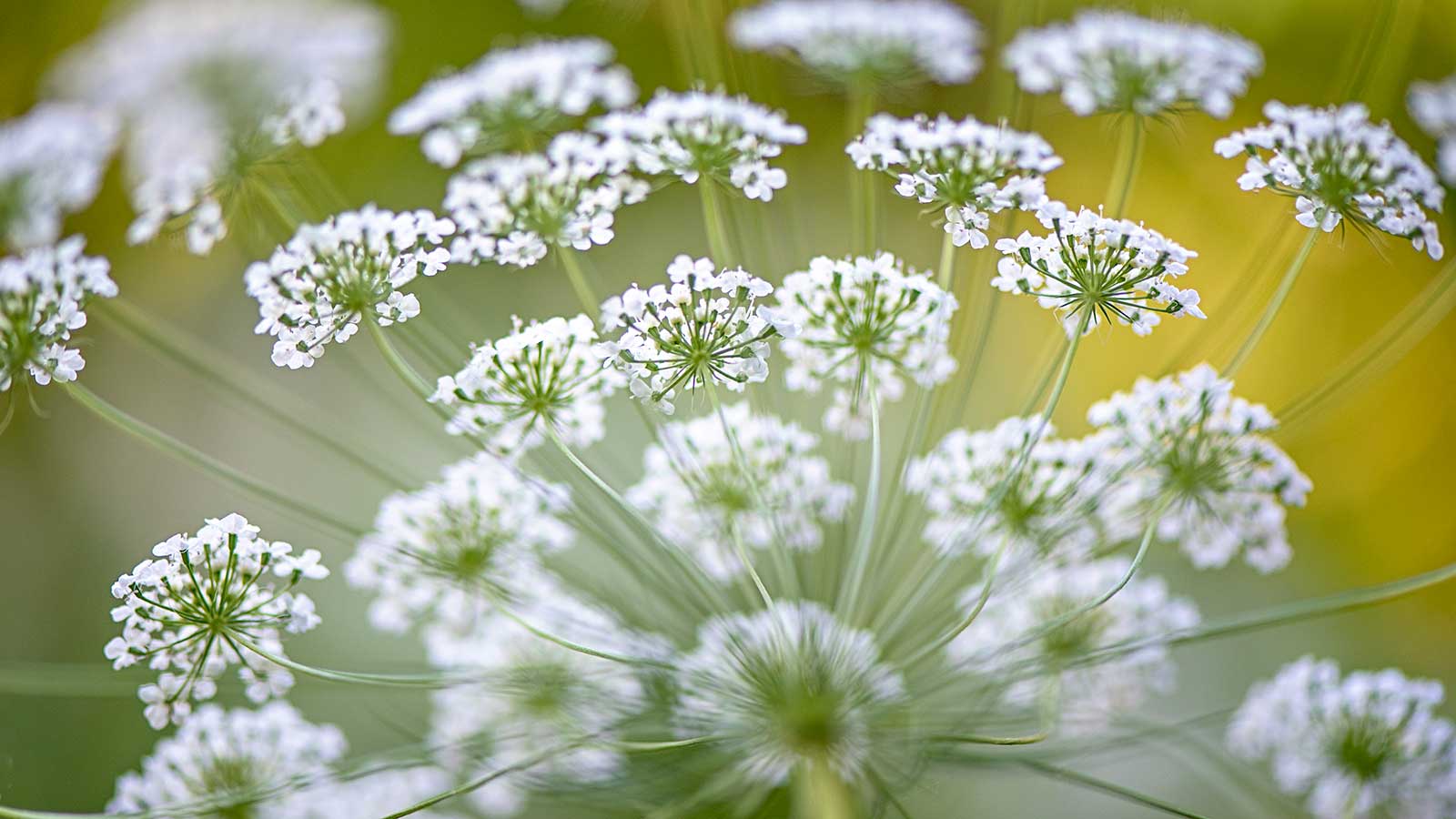
Daucus carota is also known as wild carrot, or Queen Anne's lace. True to the latter name, its flowerheads, made up of tiny white blooms (although some varieties are pink or dark purple), have an intricate, lace-like appearance. Its pretty demeanor makes it a welcome addition to relaxed bouquets – and it is good for pollinators, too, so can be well-suited to wildlife-friendly gardens.
Before you introduce this summer bloomer to your backyard, however, it's important to note that Daucus carota is often considered a flowering weed. In fact, it's regarded as an invasive plant in many US states, as it tends to spread vigorously (which can be detrimental to native plants). Best to proceed with caution, checking whether this applies to you before you plant.
If you do want to go ahead and add this flower to your borders, you'll find plenty of expert tips below on how to go about it. From sowing the seeds correctly to knowing when to water, this advice will help you grow a gorgeous display.
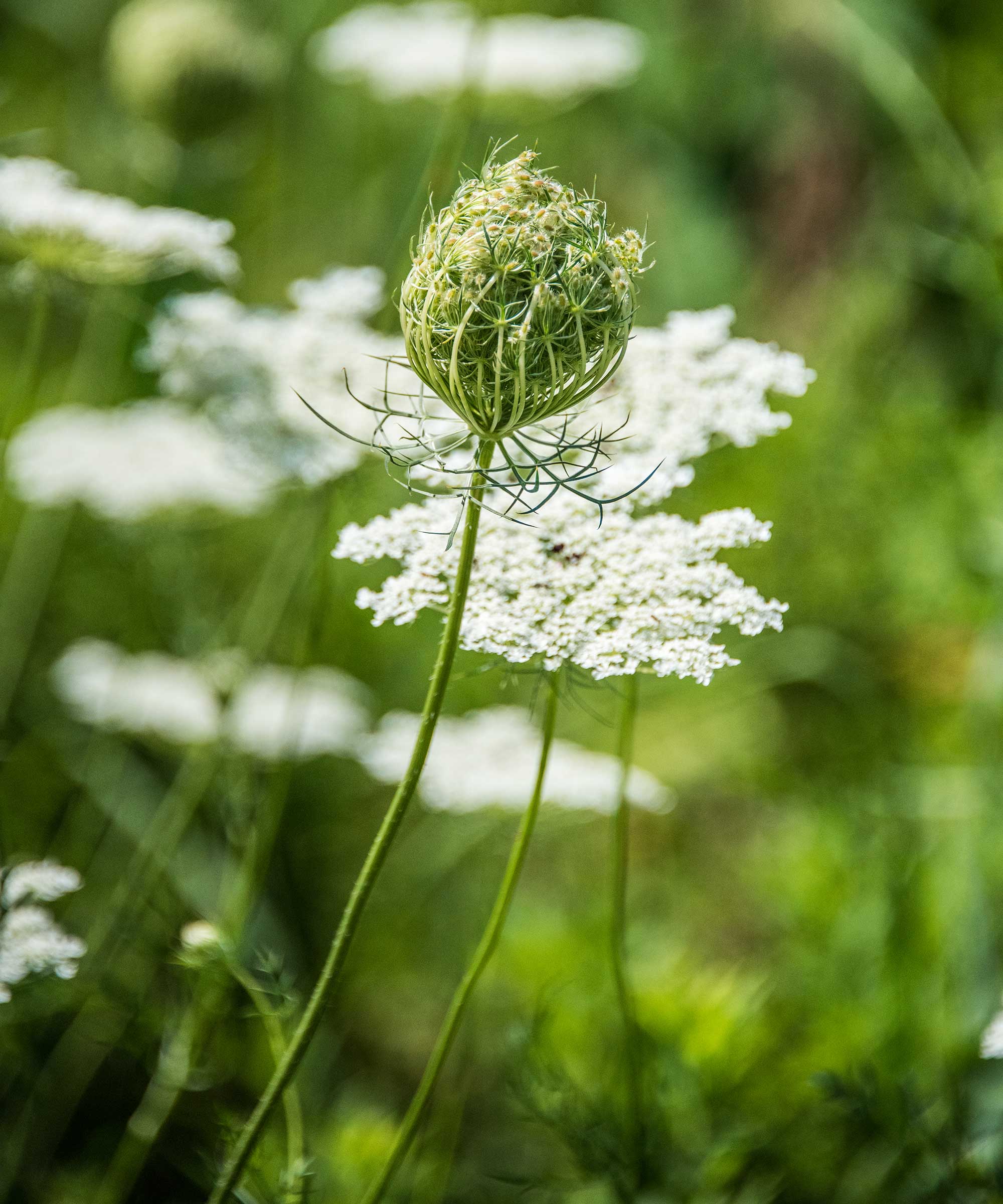
How to grow Daucus carota
The frothy tops and feathery leaves can make Daucus carota a good match for cottage garden schemes or rewilded sections of your yard – just be prepared for it to spread.
Growing habits for Daucus carota
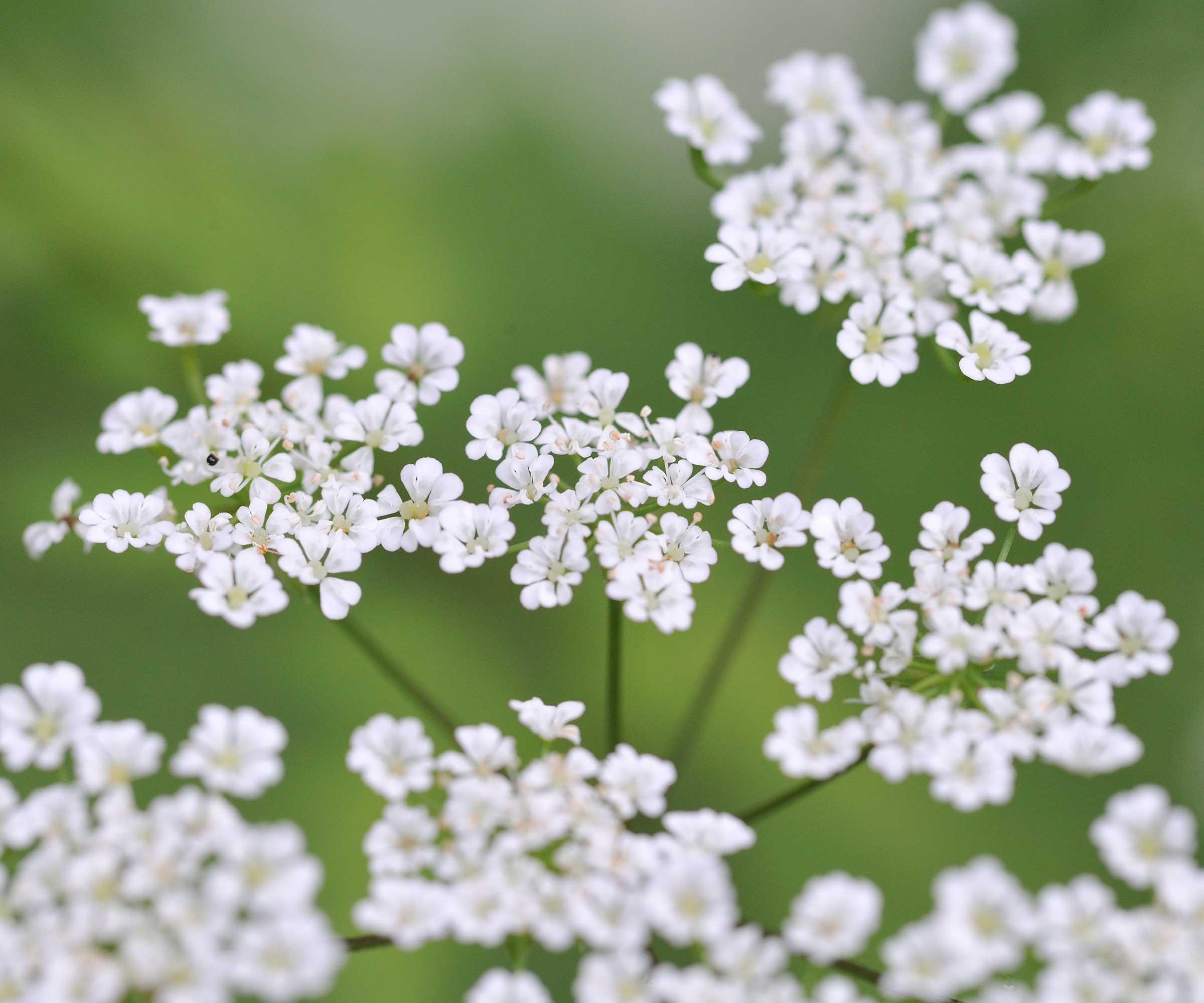
Like foxgloves, Daucus carota is a biennial, meaning it flowers and sets seed in its second year, then dies. It can grow up to four feet tall, and you may spot it growing in the wild in meadows or other open spaces.
It's unlikely you'll find it in nurseries or garden centers as a pot-grown plant, however seed packets are often available online. Allison Zeeb of seed company Sahin – Takii Europe says that to get it started, you'll want to sow its tiny seeds directly outdoors a few weeks before your last spring frost – 'It loves a little chill to get those roots going'.
'Just lightly press the seeds into the soil surface; they need a bit of sunlight to sprout,' Allison continues. 'If you're in a warmer spot, a fall sowing means earlier blooms next year. While you can try starting them indoors, it's generally not recommended because they have a sensitive taproot that really dislikes being disturbed.'
Care guide for Daucus carota

- Soil: 'For soil, think loose, well-draining, and not too rich,' says Allison. 'Too much nitrogen can actually give you more leaves than flowers.'
- Light: Justin Hancock, horticulturist at Costa Farms, says, 'Full sun (at least eight hours per day) is best, but it will grow and bloom okay in a spot with morning shade and afternoon sun. The less sun it gets, the less it blooms. So, if you don’t mind it for its foliage, you can grow it in almost full shade if you wish.'
- Watering: 'Once established, it’s pretty drought tolerant, so you may not need to water it at all once it gets going,' Justin says. 'But like any plant, it needs to mature and settle in before you can consider it drought tolerant. And like most plants, it will grow and bloom better if you water it during times of drought. Tolerating means it survives drought; it won’t truly thrive in droughty weather.'
- Fertilizing: According to Allison, Daucus carota generally isn't a hungry plant, so fertilizing isn't usually necessary unless your soil is really lacking. If your soil is poor, Justin says you might see better results by incorporating organic matter, such as compost, into the planting area rather than using a fertilizer. 'Organic matter doesn’t provide as much nutrition as a fertilizer, but it does encourage beneficial microorganisms in the soil that are just as, if not more, beneficial to your plant.' If you do choose to use a fertilizer, he says any general-purpose one will do.
- Pruning: Deadheading the flowers before they go to seed will prevent them from spreading all over your garden, or you could choose to collect them and sow them in dedicated areas instead.
- Toxicity: Daucus carota is not considered toxic, says Justin. However, it has some poisonous lookalikes, including poison hemlock (Conium maculatum) and water hemlock (Cicuta douglasii) – both of which can be deadly. Because of the risk of confusion, steer clear from ingesting Daucus carota or anything that resembles it, and keep it out of reach of children and pets, too. Also, be aware that Daucus carota may also cause skin irritation for some people.
FAQs
Are there other plants that look similar to Queen Anne's lace?
Yes – as well as the two mentioned above, other plants that look similar to Daucus carota include Ammi majus (available from Burpee and often called false Queen's Anne lace), yarrow, and cow parsley (Anthriscus sylvestris).
Is Daucus carota susceptible to pests?
According to the Royal Horticultural Society, young Daucus carota plants may be susceptible to pest problems such as carrot fly, as well as snails and slugs. Using coffee grounds or a homemade garlic spray can help to keep the latter at bay.
If you love an informal, wildflower look in your yard, it might be time to rethink this weed. And if it does get a bit too unruly, you can dig some up by the roots. Alternatively, there are lots of other beautiful white flowers to choose from, from varieties of cosmos with their satin-like petals to dainty and elegant gaura.
Shop flowerbed accessories
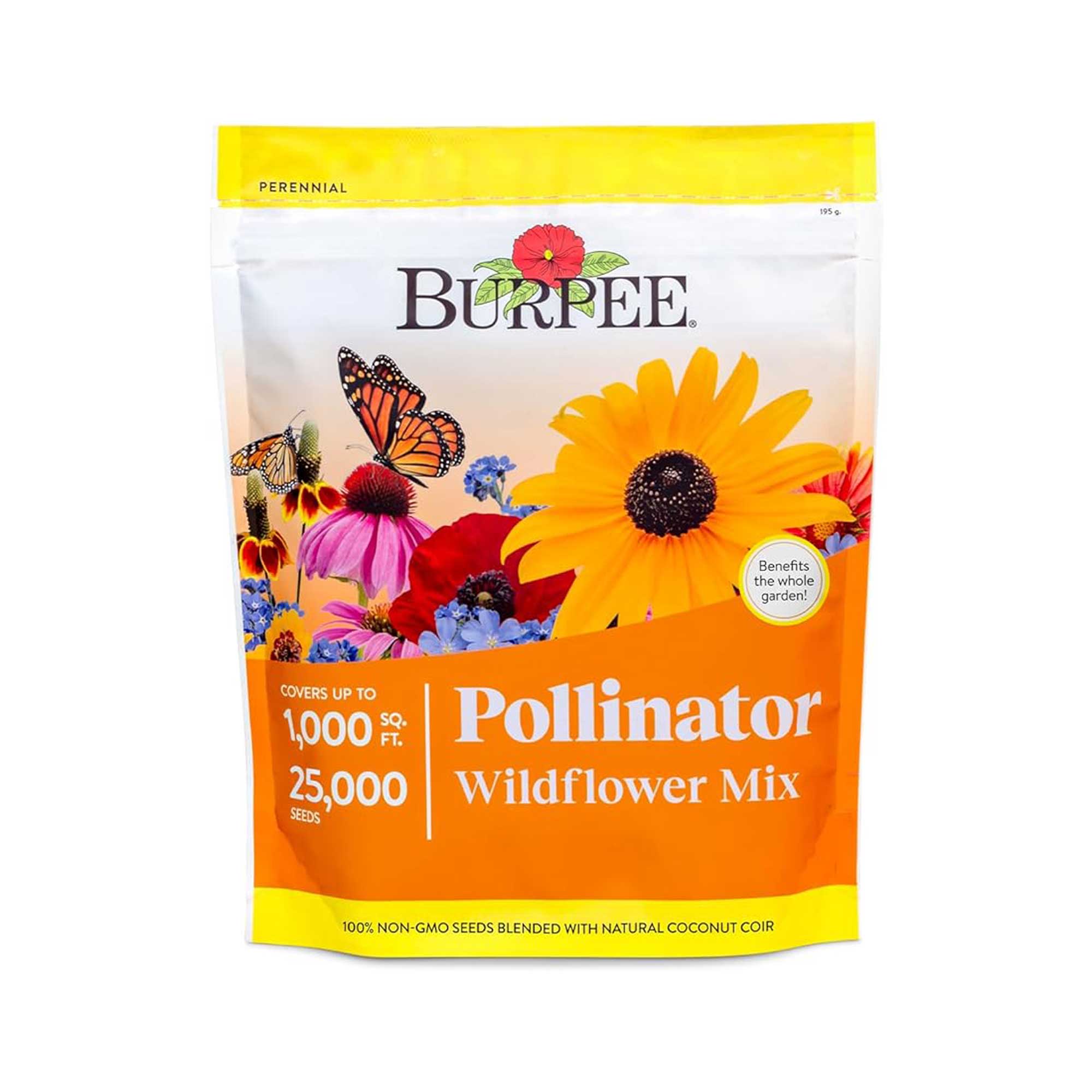
Looking to plant more pollinator-friendly blooms? This bulk bag includes 18 flower varieties for a vibrant summer display.
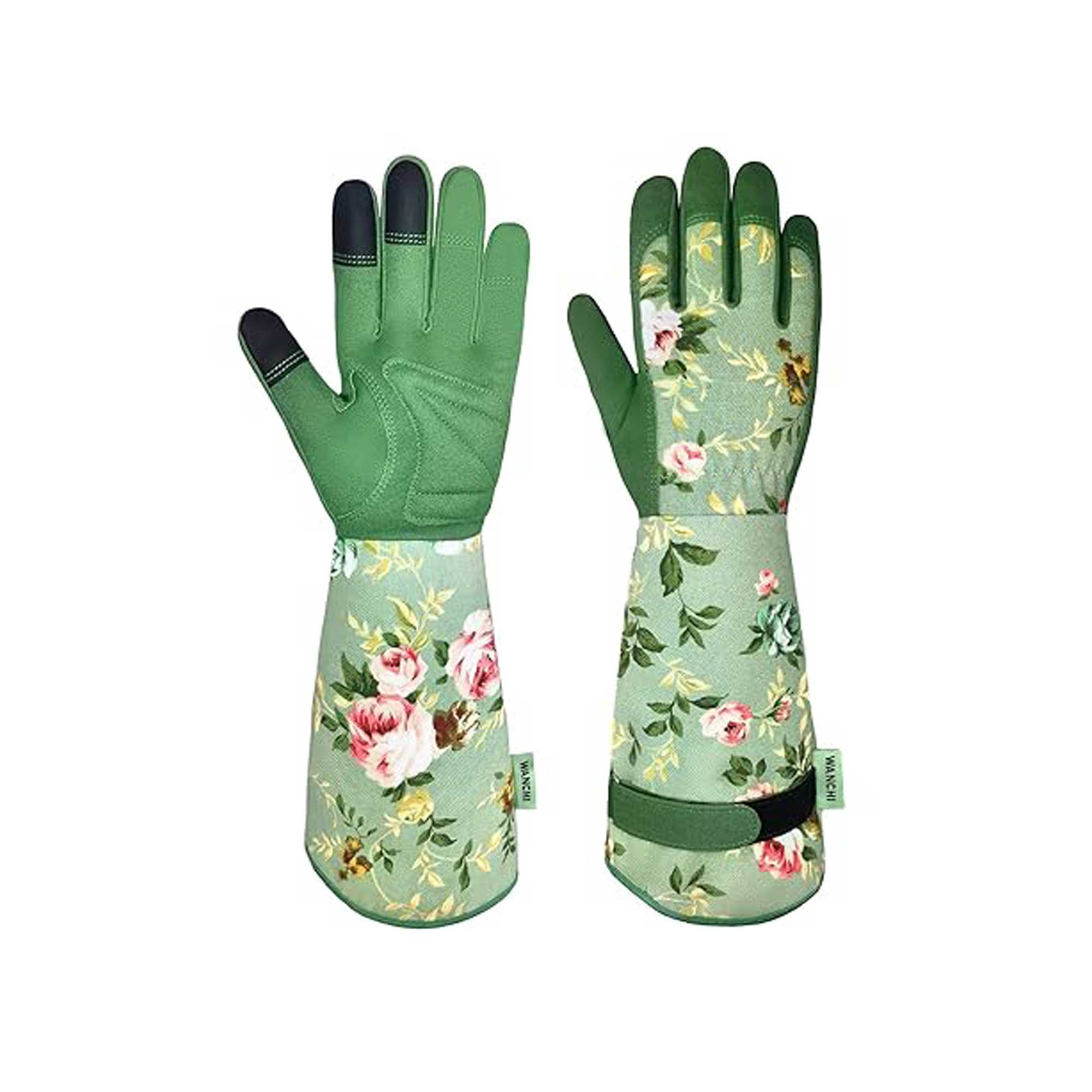
Whether you opt for the green or the blue floral design, keep your hands protected from potential irritation with these stylish gardening gloves.

Make deadheading your Daucus carota easier with these popular snips from Felco, to neaten up appearances and keep their spread under control.






